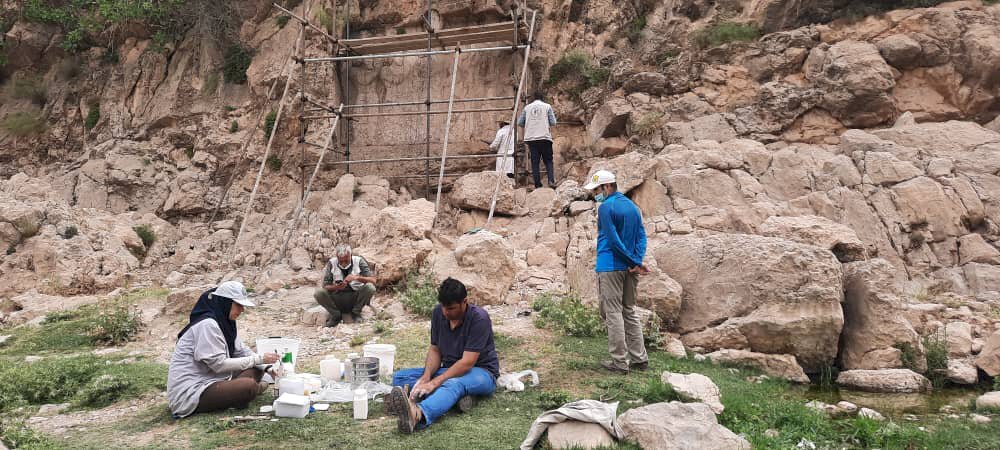Sassanid-era bas-relief undergoes urgent restoration

TEHRAN – An urgent restoration work has commenced on a Sassanid-era (224–651) bas-relief in Mamasani, southern Fars province, the deputy provincial tourism chief has said.
The restoration project is being carried out by a team of restorers and experts from the UNESCO-registered Persepolis protection and restoration team, Ali-Akbar Sadeqi explained on Friday.
Moreover, a workshop is being set up for research and executive activities related to the bas-relief named after the nearby village of Sarab-e Bahram, located nearby, the official added.
Sarab-e Bahram bas relief shows five figures carved on stone. In the middle of the relief, Bahram II is depicted sitting while holding his sword in both hands as a symbol of strength, authority, and power. During the Sassanid period, each king had his own crown, which led to the attribution of this relief to Bahram II because of this king's unique crown shape. The two elders of the country, who stand on either side of the king, hold up their index fingers in honor of him.
The ancient region of Fars, also spelled Pars or Persis, was the heart of the Achaemenian Empire (c. 550–330 BC), which was founded by Cyrus the Great and had its capital at Pasargadae. Darius I the Great moved the capital to nearby Persepolis in the late 6th or early 5th century BC.
The capital city of Shiraz is home to some of the country’s most magnificent buildings and sights. Increasingly, it draws more and more foreign and domestic sightseers flocking to this provincial capital which was the literary capital of Persia during the Zand dynasty from 1751 to 1794.
Shiraz is home to some of the country’s most magnificent buildings and sights including Eram Garden, Afif-Abad Garden, Tomb of Hafez, Tomb of Sa’di, and Jameh Mosque of Atigh.
ABU/AFM
